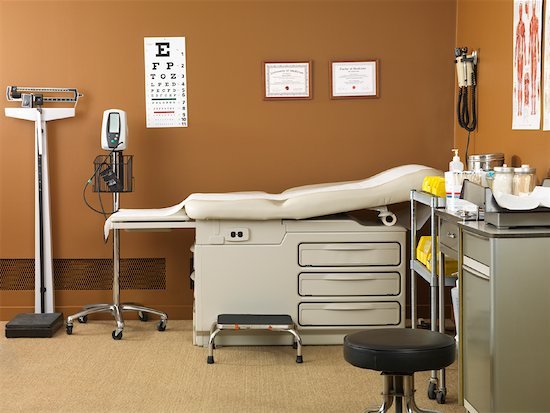
ObamaCare may be the law of the land. There’s really nothing you can do about it. The votes are not there to repeal it, and might not be there in the future, either. The Supreme Court abandoned us in 2012.
However, you must remember: ObamaCare, along with the whole Medicare-Medicaid socialized medicine structure, will eventually repeal itself. It’s in the process of doing so right now, as debt and expenditures to cover these programs take the national debt beyond anything the United States experienced (adjusting for inflation) even for all of World War II. To say nothing of the poor quality of care resulting from attempting to administer these increasingly bankrupt programs, such as cutting fees to doctors and all else to come.
The question isn’t so much political as individual, and even psychological. Where do each of us, as potential patients requiring medical care, go from here?
The only hope lies in the marketplace. In a best case, government would liberalize the marketplace, so profit-seeking entities (including entrepreneurial physicians) can seek to meet patient demands in a rational marketplace. If government insists on offering us the expensive and corrupt equivalent of the public school system for medicine, there must be private alternatives.
One such alternative is found at a website referred to me by a reader of mine. You can check it out for yourself. It’s called “Direct Primary Care” at dpcare.org. I’m not endorsing this particular website or company. I’m simply using it as an illustration of what may yet come in health care — and had better come, if we’re to survive the legalistic and bureaucratic monstrosity our federal government has taken years to build.
Direct Primary Care states the following on its website:
America needs more primary care providers, but with today’s fee-for-service insurance model, primary care has little to offer doctors. With family practice offering less than half what other specialist salaries pay and day-to-day job satisfaction dropping steadily, it should be no surprise that primary medicine attracts fewer and fewer new doctors and loses many practicing doctors each year.
The source of the problem is the fee-for-service system that the current insurance model enforces. By paying primary care doctors only a small fee per patient visit, the system rewards quantity of care rather than the quality of care. In order for primary care practices to survive, they must adopt a conveyer-belt strategy for seeing patients, with visits averaging only five minutes and unnecessary specialist referrals filling in the care gap.
How does it work? Patients pay one low monthly fee–sometimes as low as $49-directly to their direct primary care facility for all of their everyday health needs. Like a health club membership, this fee gives patients unrestricted access for visits and care, so patients can use the services as much or as little as they want.
Is this a one-size-fits-all recommendation? Of course not. That’s what advocates of government medicine will scream: “This won’t work because….” Of course nothing will work for everyone. That’s the whole point. We’ve got to get government out of the field of health care, so consumers and doctors can figure it all out.
Health insurance started out as hospital insurance. People purchased hospital insurance in the marketplace so that they could afford catastrophic care when and if they needed it. Government regulations (e.g. mandating coverage for primary care) and tampering with/restricting the marketplace (e.g., no purchasing insurance across state lines; tax credits for large companies, but not individuals) are what led to health insurance premiums skyrocketing in the first place.
The company’s website makes another excellent point:
Imagine if we relied on auto insurance for “primary care” for our vehicles (fluid changes, tire rotations, wiper blades). Think of the paperwork and billing hassles we would endure for each little oil change. The overall cost of auto maintenance would increase to cover the business overhead. Soon, fewer Americans would be able to afford auto insurance, with serious ramifications for liability, setting the stage for a national crisis. It’s a ridiculous idea, isn’t it? Yet this is the way that health care works in America today.
Repealing ObamaCare and privatizing the medical field are important, and ultimately crucial measures. But first, doctors must opt out of the government marketplace; and patients — especially the reasonably healthy ones who seek out doctors for primary care — must begin to consider alternatives, as well. This is the only way things will change. And, once the habits of patients and policies of physicians begin to change, greater pressure will build on Congress and the President (future ones, because the present ones are hopeless) to liberalize the marketplace for medical care.
It’s a hopeful scenario, but not an impossible one.
Keep in mind that pressure for “health care reform” built and grew because the status quo was dysfunctional and unpopular. Yet what we’re left with after ObamaCare is even more of the status quo than we had before. The advocates of socialized medicine got just about everything they wanted in this law. It’s their dream (our nightmare) come true. When things don’t improve, or even get worse, it will be easier to make the case for the complete opposite of what we’ve known: In other words, to make the case for a free marketplace in medicine.
Be sure to “friend” Dr. Hurd on Facebook. Search under “Michael Hurd” (Rehoboth Beach DE). Get up-to-the-minute postings, recommended articles and links, and engage in back-and-forth discussion with Dr. Hurd on topics of interest.
